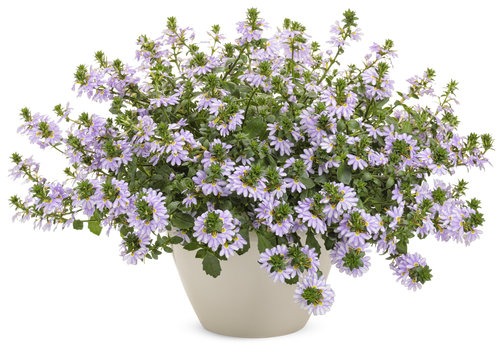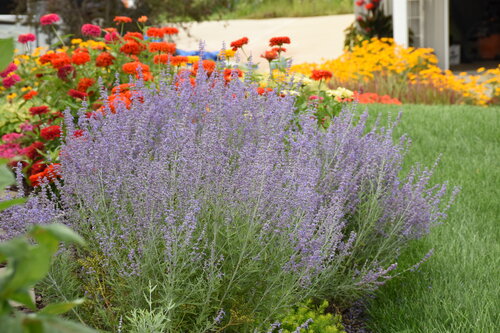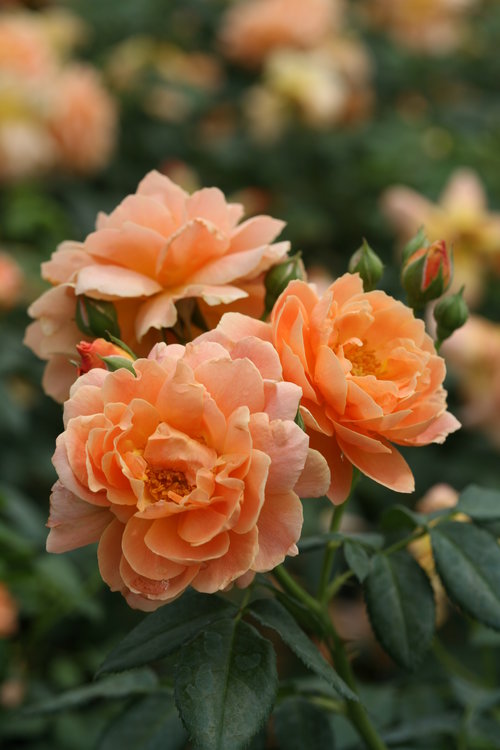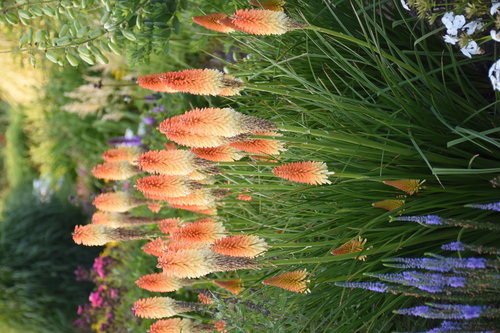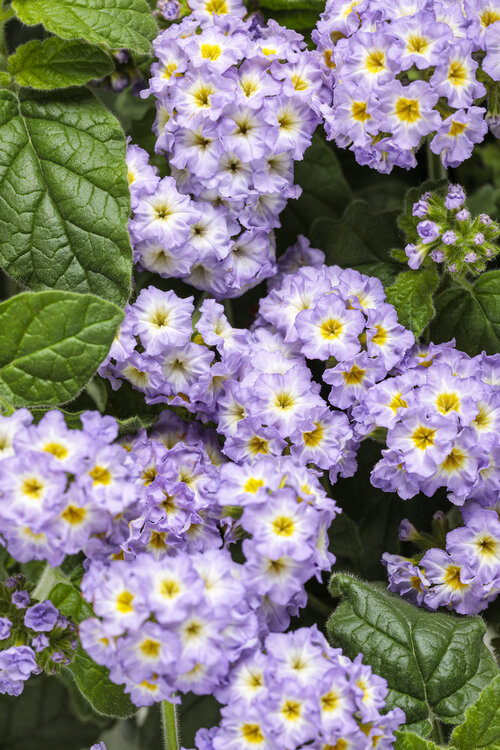Best for the West™ - Janey Santos of Dig, Plant, Water, Repeat

 |  |  |
| Looking for a retailer that sells Best For The West Collection varieties? Find a Retailer Near You. Janey Santos of @DigPlantWaterRepeat will be speaking this spring at garden centers in multiple cities in AZ, CA, ID, & OR. Don’t miss out on this free seminar. Check here if she’ll be near you. |
Articles: (click on the bullets below to jump to one on the following articles.)
TOP 5 Site Issues in the Western Garden
We can agree that all gardens need soil, light and water to thrive; that is where the similarities end. All gardens are different, and all gardens have site-specific issues to contend with. No two gardens are the same, and no two gardens have the same challenges. Managing site-specific matters is crucial for a successful garden. Let's explore five such challenges and some solutions that might help you along the way.
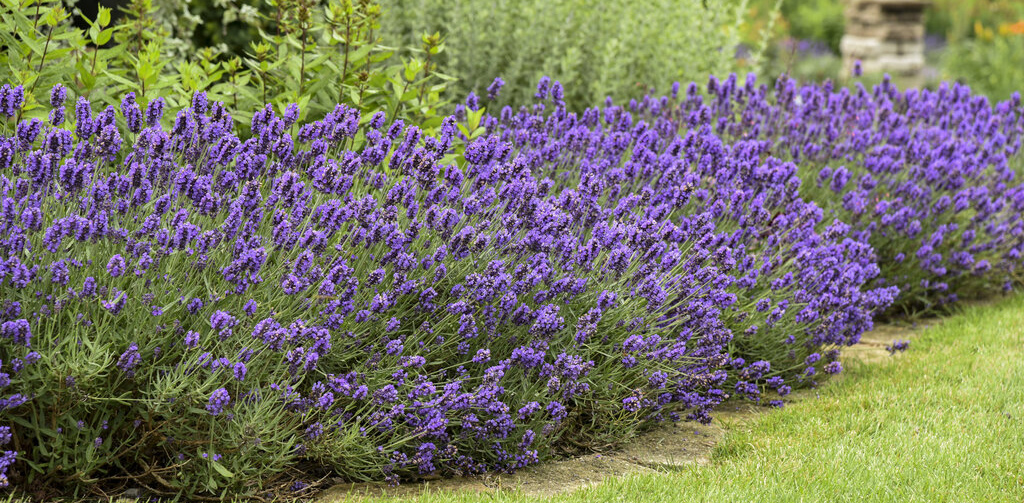
Humidity:
The level of humidity in your region significantly impacts your garden's success. Some plants thrive in high humidity, while others prefer arid conditions. Your plant selection should extend beyond USDA zone ratings to also include considerations of the moisture levels in your area. Consider the Pillow Talk Gardenia for humid environments, which will perform its best in high humidity. If you live in a drier climate, try Sweet Romance® Lavender
Lavandula angustifolia. Lavender is known for enjoying low humidity and dry soil.
Sun Strength:
Sun intensity can vary across regions and affect the light requirements of plants. The sun's strength increases as you get closer to the equator. This is important to us as gardeners to determine the right amount of light a plant needs. Even if the plant tag states, “full sun,” a plant in a very sunny garden in the Southwest might need some protection in the hot afternoons. Alternately, plants in northern gardens might need more sun than the tag indicates to thrive.
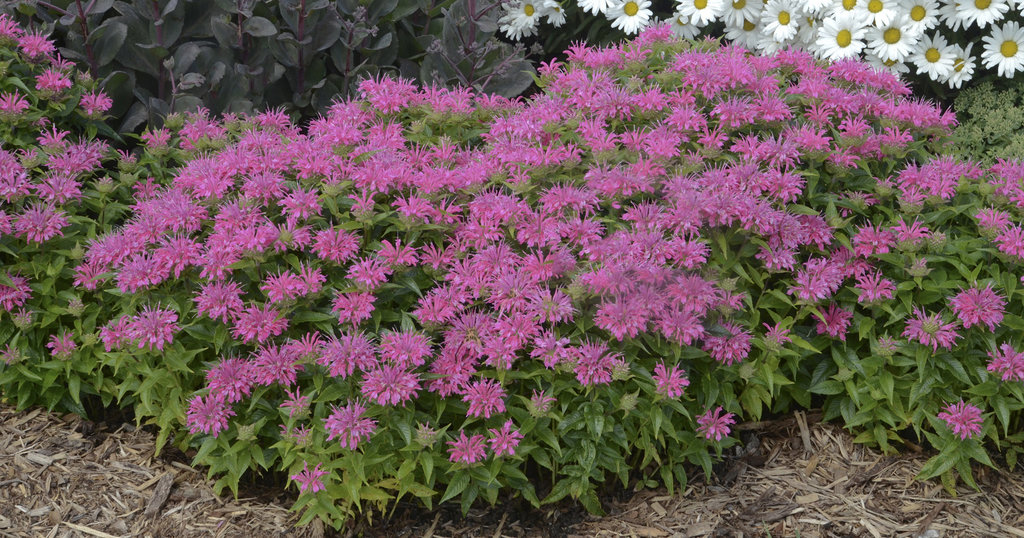
Drainage:
Standing water after 12 hours indicates poor drainage, which can be caused by factors like clay soil, compacted soil, or improper grading. To address poor drainage, amend the soil with organic matter and consider creating a rain garden with plants like 'Pardon My Pink' bee balm - Monarda didyma absorbs excess moisture, enhancing soil conditions.
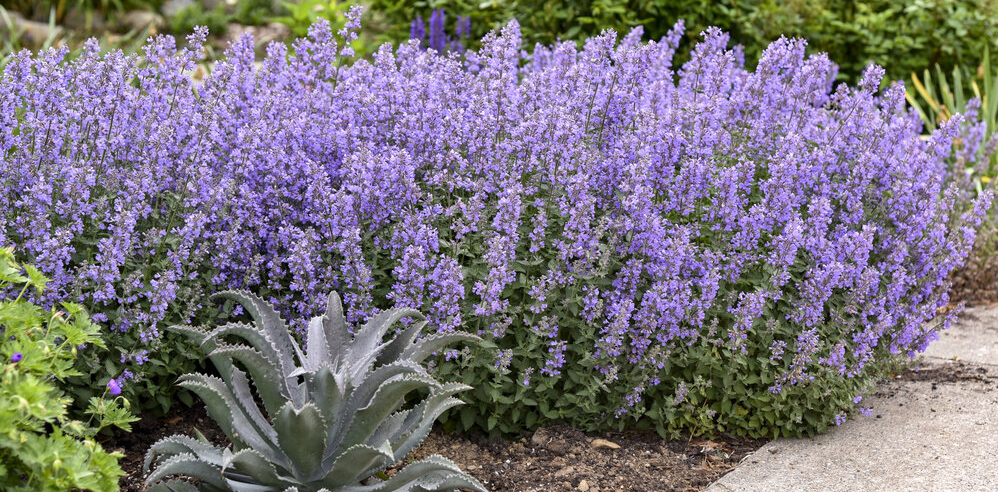
Wind:
Wind can damage fragile foliage, break branches, and dry out plants. Choosing plants that can tolerate wind pressure, such as 'Cat's Meow' catmint - Nepeta faassenii, can help. Planting in an area of your garden that is protected by a structure such as a fence or house is a way to troubleshoot a wind problem, as is planting living windbreaks with tall hedges and trees.
Water Availability:
Increasingly common water-related challenges, such as droughts and watering restrictions can wreak havoc on a garden. Collecting rain with rain barrels connected to downspouts, using drip irrigation instead of overhead spray, and using proper mulching can help conserve water. Choose drought-tolerant plants like Whirlwind® blue fan flower - Scaevola aemula and the Luscious® Basket Tangeglow™ - Lantana camara to withstand more extended periods between watering.
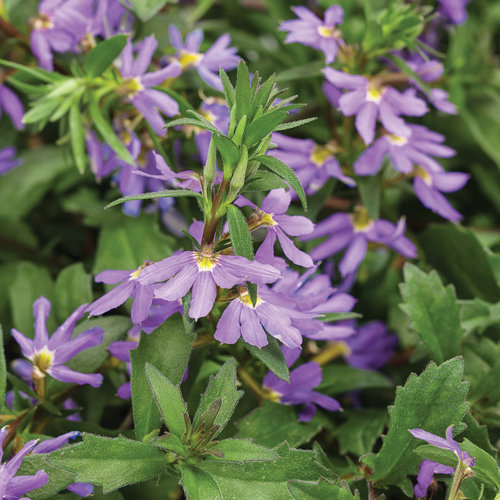
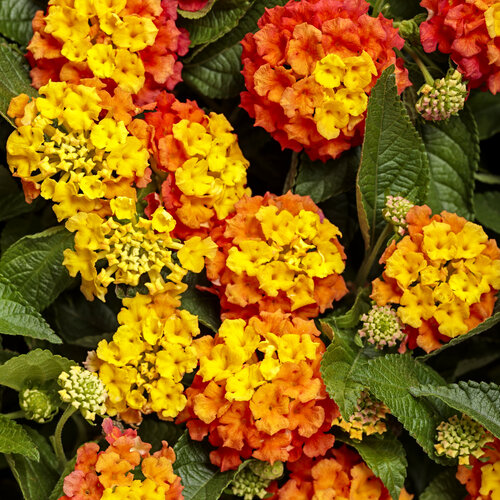
In troubleshooting garden issues, it's essential to recognize the uniqueness of your space. Knowledge empowers you to overcome obstacles and challenges specific to your own space. Understanding and addressing these challenges can pave the way for a successful garden, no matter the issue.
Let There Be Light!
Light, along with water and soil, is one of the main components that plants need to thrive. A plant will take energy from the sun and convert it into food through a process known as photosynthesis. The tricky thing is that some plants need more light than others. Some plants can handle the day, burning hot sun, whereas others only need dappled light to thrive. The goal of a gardener is to find the optimum amount of light for a plant in the garden to allow it to flourish.
Let’s discuss 5 things a gardener should know about light to optimize the garden:
Tip #1: Know Your Terms
When you look at a plant tag, you’ll notice that the grower has labeled the plant with a certain light term, either full sun, part sun, part shade, full shade or even indirect light. These terms are the growers’ way to guide you to the proper placement of the plant so it can thrive. Knowing the horticultural definition of these terms is important.
Full sun is pretty straightforward. This plant likes light and lots of it! Make sure a full sun plant is in at least 8 hours of light per day.
Part sun and part shade are the most confusing terms, at least for me. A lot of people consider them the same thing, but there are a few distinguishable characteristics you need to know about part sun versus part shade.
Part sun means 4-6 hours of light per day. Part shade is 2-4 hours; however, those 2-4 hours should be gentle morning light. A part sun plant can handle up to 6 hours of sun, no matter what time of day. A part shade plant might scorch and burn if you put it in 2 hours of burning hot afternoon sun.
Full shade is a little misleading of a term. You would think that this means a plant can’t be in any sunlight at all, but it can handle up to 2 hours of gentle morning sun, and some plants will like an hour or 2 of this type of sun.
Finally, the term bright indirect light corresponds with light that you would often find indoors. Imagine the sun coming in through a window and shining on a table. Bright indirect light would be just next to that sunbeam.
Tip #2: Consider Light Intensity
An often ignored, but extremely important concept of light in the garden is the amount of light intensity in your region. Imagine the strength of the sun in Phoenix, Arizona versus the strength of the sun in Buffalo, New York. Eight hours of direct sun in both these regions is still technically full sun, but logically, we can all see that the intensity and strength of those 8 hours are going to be different. It’s hard for a grower to indicate this on a plant tag so it’s up to us as gardeners to know our region’s sun intensity and the effect it might have on our garden.
Another way to think about light intensity is the varying intensity of the sun as the day progresses. The early morning sun is gentle and soft. A few hours into the morning sun are going to be very different compared to the stronger, more intense sun of the mid to late afternoon. When choosing locations for your plants, it’s important to consider the type of sunlight hours your plants will be getting.
Tip #3: Choose your plants wisely
Now that we understand the definition of light requirements, it’s time to go plant shopping! Note what light level you are looking for based on the area of your garden that you want to plant up, then check the tags of plants at the garden center to make sure the light levels match. If you are shopping on the Proven Winners Website, you can actually filter your search to specific light levels to make it easier for yourself.
Here are some great examples of plants in each light exposure level:
Full sun: Luscious® Lantana - This series of plants thrive well in lots of sun. If you are looking for a plant that can handle the heat, it’s hard to beat a lantana.
Part Sun: Pure White Butterfly® Marguerite Daisy - This gorgeous cottage garden staple is a perfect part sun plant. It likes the sun, but not too much.
Part Shade: Endless™ Illumination Bush Violet - The perfect plant for under an awning or underplanting a shrub. This plant can handle less light but still provide gorgeous color all season long.
Full Shade: Little Henry® Sweetspire - Little Henry is a special plant that can handle a variety of conditions, including full shade. A perfect plant to add to a difficult spot that doesn’t get a lot of light!
Indirect Light: Try one of the new leafjoy™ houseplants.

Tip #4: Check for Signs of Light Problems
Now that you’ve planted your beautiful plant, your job as a gardener is never done. It’s important to check the plant to watch for signs of either too much sunlight or even too little. Signs your plant might be getting too much sun burning or scorching of the leaves. You will notice crispy brown edges on the leaves which might indicate there is too much light for that plant to handle during the day. Plants with too much sun can also bleach out, with the color of the blooms fading as time goes on. Signs of too little light are stretching, where you will notice the stems growing and the space between the leaf nodes getting longer and longer. This is a sign that the plant is trying to reach for the light it so desperately needs. Another sign of too little light is a lack of blooms. If you notice a plant is not blooming, you should pay attention to the amount of sun it’s getting during the day. Again, plants convert light into food for themselves. No light means no food, and therefore no blooms.
Tip #5: It’s OK to Adjust as needed
If you do notice a light problem in your garden, don’t be afraid to move a plant from one location to another to give it more light or less light. Healthy plants are resilient and might appreciate the move. Try adjusting structures around the plant. Try trimming the limb canopy of a nearby tree to allow for more sunlight to get through. Maybe install a lattice partition or maybe a gorgeous 4-sided tuteur or obelisks to protect a plant from the hot afternoon sun. My favorite way to garden is through trial and error. If I see a choice not working out, I adjust accordingly.
Mother Nature is always in charge. As gardeners, we partner with her successful gardening by knowing how to assess soil, water and light when selecting our plants. The “secret sauce” in creating a successful garden is mindful partnership.
Zoning In on The Truth
One of the most important pieces of information for a gardener is knowing your USDA Zone. That zone is a great starting point to tell you what plants can grow in your garden and how they should survive the winter. One thing I have learned, however, is that not all zones are created equal. My Zone 9 in Northern California is vastly different than Tampa, Florida’s Zone 9. My summer is hot and dry, and I cannot even remember what the word “humidity” means. Counter that to my friends in Florida, who also are in Zone 9, but they get rain on a regular basis. When it’s not raining, the humidity is so high it
can feel like you are swimming instead of walking through your garden.
There is lots of information to be found about gardening in the heat with humidity. Take for example “The Garden Guy” Norman Winter, who is a southern gardening specialist. He has a wealth of information about growing plants down south, and if you live there, check him out. But what about those of us on the west coast?
The west coast has a varied climate, with coastal areas, deserts, and mountains that affect the weather with micro-climate conditions. While it is difficult to generalize about all western climates, most of us have long, hot, dry summers and cool, wet winters. Humidity is exceptionally low, and we can have intense winds that can dry out our plants.
When shopping for plants, the most important thing to know is your climate zone. But knowing if the plant thrives in the West Coast climate is even more valuable. That's why I put together a plant list from Proven Winners ® called Best for the West, that includes shrubs, perennials, and annuals that can handle the heat and dryness of the west coast climate. I was inspired to create this list based on my own gardening experience in California, as well as recommendations from local arboretums and garden centers.
If you have had trouble growing a big leaf hydrangea, try an oak leaf hydrangea such as Gatsby Pink®, which needs only half the water of a big leaf hydrangea. Other plants that thrive in our hot, dry summers include the Whirlwind® Scaevola series and the colorful Superbenas®. And of course, no garden in the west coast is complete without Proven Winners® Denim N' Lace Russian sage.
|
|
|
|
Yes, our weather is hot and dry, but that does not mean we cannot have plants that survive in our climate but can thrive in it. Check out the Best for the West plant list below to use as a guide for planning your garden next season.
Plants That Thrive in West Coast Gardens
• Best for the West Annuals • Best for the West Perennials • Best for the West Shrubs
One of the most important pieces of information for a gardener is knowing your USDA Zone. That zone is a great starting point to tell you what plants can grow in your garden and how they should survive the winter. One thing I have learned, however, is that notall zones are created equal. My Zone 9 in Northern California is vastly different than Tampa, Florida’s Zone 9. My summer is hot and dry, and I cannot even remember what the word “humidity” means. Counter that to my friends in Florida, who also are in Zone 9, but they get rain on a regular basis. When it’s not raining, the humidity is so high it can feel like you are swimming instead of walking through your garden.
There is lots of information to be found about gardening in the heat with humidity. Take for example “The Garden Guy” Norman Winter, who is a southern gardening specialist. He has a wealth of information about growing plants down south, and if you live there, check him out. But what about those of us on the west coast?
The west coast has a varied climate, with coastal areas, deserts, and mountains that affect the weather with micro-climate conditions. While it is difficult to generalize about all western climates, most of us have long, hot, dry summers and cool, wet winters. Humidity is exceptionally low, and we can have intense winds that can dry out our plants.
When shopping for plants, the most important thing to know is your climate zone. But knowing if the plant thrives in the West Coast climate is even more valuable. That's why I put together a plant list from Proven Winners® called Best for the West, that includes shrubs, perennials, and annuals that can handle the heat and dryness of the west coast climate. I was inspired to create this list based on my own gardening experience in California, as well as recommendations from local arboretums and garden centers.
|
| Heliotrop |
If you have had trouble growing a big leaf hydrangea, try an oak leaf hydrangea such as Gatsby Pink®, which needs only half the water of a big leaf hydrangea. Other plants that thrive in our hot, dry summers include the Whirlwind® Scaevola series and the colorful Superbenas®. And of course, no garden in the west coast is complete without Proven Winners® Denim N' Lace Russian sage.
Yes, our weather is hot and dry, but that does not mean we cannot have plants that survive in our climate but can thrive in it.
Check out the Best for the West plant list on the Proven Winners® website to use as a guide for planning your garden next season.
• Best for the West Annuals
• Best for the West Perennials
• Best for the West Shrubs





